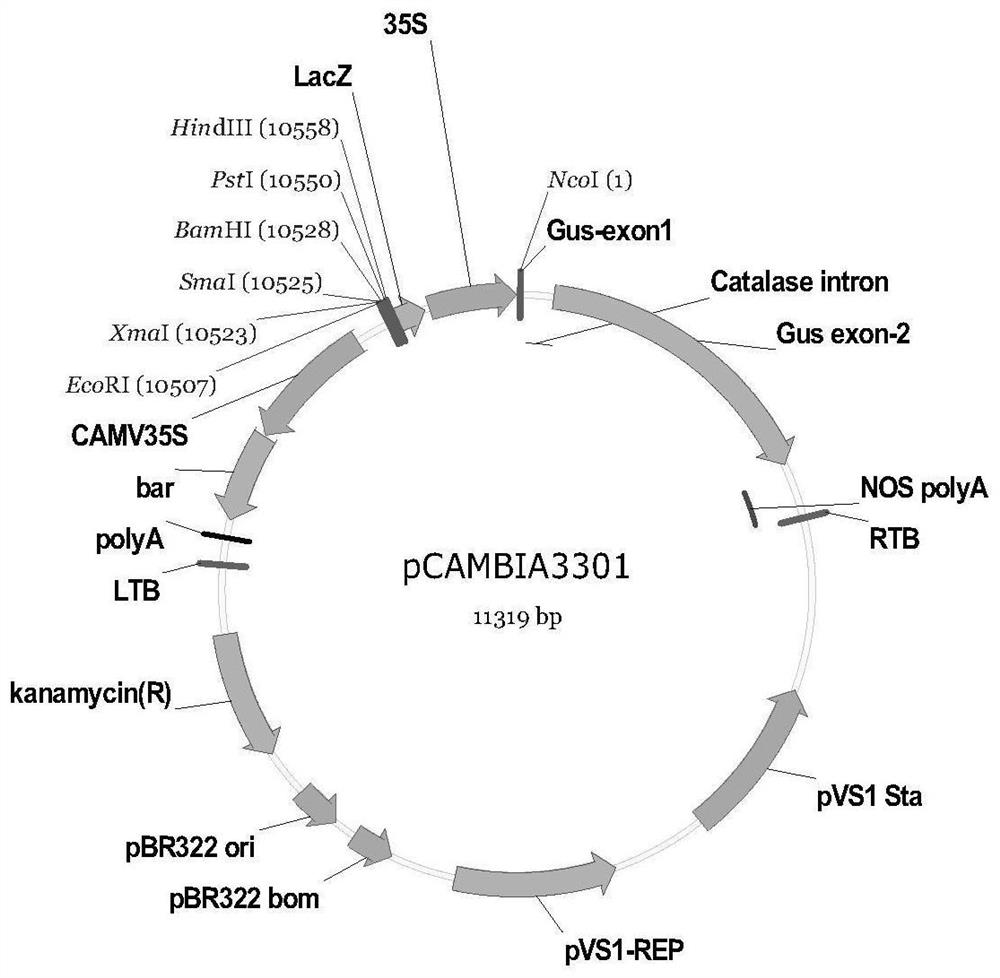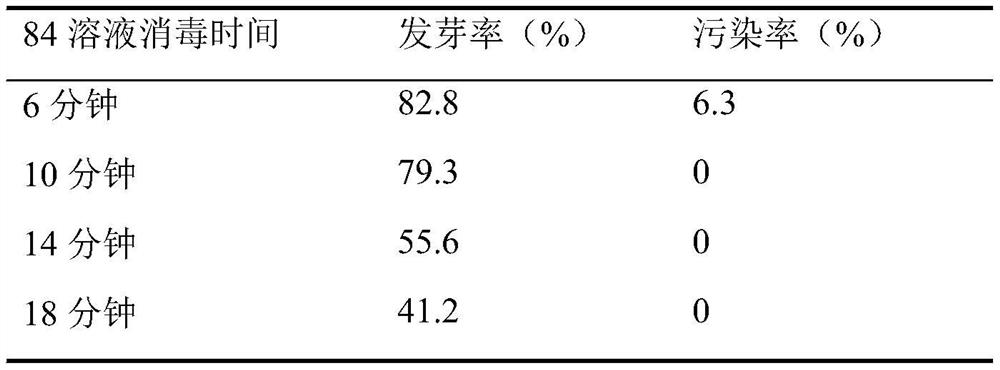Genetic transformation method of agrostis stolonifera
A genetic transformation method and genetic transformation technology, applied in biochemical equipment and methods, horticultural methods, botanical equipment and methods, etc., to achieve the effects of simple and easy operation, promotion of molecular breeding and genetic improvement, and high transformation positive rate
- Summary
- Abstract
- Description
- Claims
- Application Information
AI Technical Summary
Problems solved by technology
Method used
Image
Examples
Embodiment 1
[0035] The disinfection treatment of embodiment 1 seed
[0036] The seeds of creeping bentgrass are very small and covered with fluff. Sandpaper should be used to gently rub the fluff to remove the fluff. At the same time, it serves the purpose of shelling and is convenient for subsequent disinfection treatment. Disinfect the seeds on the ultra-clean workbench: soak in 75% (v / v) alcohol for 1 minute, pour off the alcohol, add 50% (v / v) 84 solution to soak for 6, 10, 14 minutes, wash with sterile water After 5 times, transfer the seeds to a sterilized 0.1% agarose solution, pipette evenly, spread them evenly on the MS medium with a pipette, seal them with a parafilm and place them in a culture room at 25-28°C in the dark After 2 weeks of cultivation, the germination rate was counted. The results showed that the 84 solution disinfection for 10 minutes could effectively control the pollution, and the germination rate reached 79.3%. With the prolongation of the treatment time, th...
Embodiment 2
[0039] Embodiment 2 induces callus
[0040]After the seeds have been subjected to the above-mentioned optimal disinfection treatment, the seeds are transferred to a sterilized 0.1% agarose solution, pipetted evenly, and spread evenly on the MS medium with a pipette. Medium composition: 4.43g / L MS, 30g / L sucrose, 500mg / L casein hydrolysate, 0~8.8mg / L 2,4-D, 0~1mg / L 6-BA, 2g / L phytagel, PH=5.7 , sealed with a parafilm and placed in a culture room at 25°C in the dark for 6 weeks. Among them, the concentration of 2,4-D is set to 2.2mg / L, 4.4mg / L, 6.6mg / L and 8.8mg / L, and the concentration of 6-BA is set to 0.5mg / L and 1.0mg / L. After 4 weeks, the statistics of callus induction showed that when the concentration of 2,4-D was 6.6mg / L and the concentration of 6-BA was 0.5mg / L, the callus induction rate reached 92.3%. Bright yellow is a relatively good growth state. Accordingly, this concentration combination is selected as the optimal formula for callus induction.
[0041] Table 2....
Embodiment 3
[0043] The determination of embodiment 3 resistant callus screening concentration
[0044] The callus with better growth state and the same size was selected and transferred to the subculture medium (medium composition: 4.43g / LMS, 30g / L sucrose, 500mg / L casein hydrolysate, 6.6mg / L 2,4-D, 0.5mg / L 6-BA, 2-10mg / L phosphinothricin, 2g / L phytagel, pH=5.7). The concentrations of glufosinate-ammonium are 2mg / L, 4mg / L, 6mg / L, 8mg / L, 10mg / L respectively. Observe the growth state of the callus after cultivating in the dark at 25-28°C for two weeks. It is found that when the concentration of glufosinate-ammonium reaches 8 mg / L, the callus turns brown and growth stagnates, which is a more suitable concentration for screening.
PUM
 Login to View More
Login to View More Abstract
Description
Claims
Application Information
 Login to View More
Login to View More - R&D
- Intellectual Property
- Life Sciences
- Materials
- Tech Scout
- Unparalleled Data Quality
- Higher Quality Content
- 60% Fewer Hallucinations
Browse by: Latest US Patents, China's latest patents, Technical Efficacy Thesaurus, Application Domain, Technology Topic, Popular Technical Reports.
© 2025 PatSnap. All rights reserved.Legal|Privacy policy|Modern Slavery Act Transparency Statement|Sitemap|About US| Contact US: help@patsnap.com



